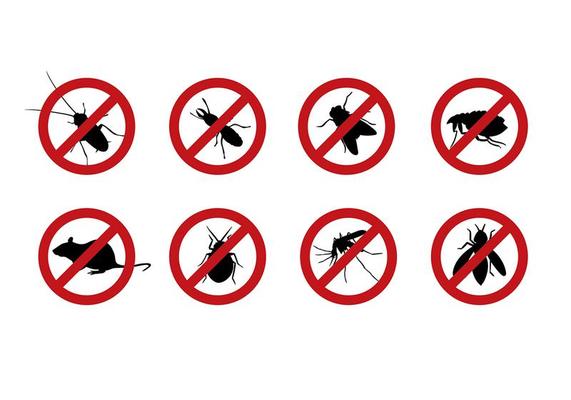Discovering Infestation and Treatment Approaches worldwide of Pest Control
The landscape of insect control encompasses a myriad of obstacles, particularly as invasions of common home parasites proceed to evolve. By incorporating preventive steps with advanced monitoring methods, such as Integrated Pest Monitoring (IPM), property owners can much better protect their atmospheres.

Usual Household Pests
When it comes to managing our living rooms, comprehending typical family bugs is important. These parasites not only disrupt our convenience but can also present health dangers and damage residential or commercial property. One of the most widespread family insects include ants, cockroaches, rats, termites, and bed pests.
Ants, often seen foraging in cooking areas, can infect food and establish huge swarms. Rats, including computer mice and rats, can create architectural damages and lug conditions like hantavirus and salmonella.
Recognizing the indications of these bugs, such as droppings, nests, or bite marks, is vital for early intervention (Pest Control Lockhart). Correct cleanliness techniques, securing entrance points, and maintaining a clutter-free setting are reliable preventative actions. By determining these usual house insects and comprehending their actions, home owners can take aggressive actions to reduce infestations, making certain a healthier living setting
Understanding Bug Infestations
Parasite problems can rise quickly, turning a small nuisance right into a substantial problem if not resolved quickly. Typical variables contributing to invasions consist of inadequate sanitation, structural vulnerabilities, and seasonal modifications that drive bugs inside your home.
Determining the kind of parasite is necessary, as various types display diverse habits and reproductive rates. For instance, rats may establish nests in hidden areas while pests like roaches prosper in moist atmospheres. Early detection frequently pivots on recognizing indications such as droppings, gnaw marks, or uncommon noises, which can indicate a problem prior to it comes to be extreme.
Environmental problems likewise play a crucial duty in insect spreading. Cozy, moist environments can facilitate the quick development of insect populaces, while modifications in landscape design or construction can accidentally produce conducive settings. Regular evaluations and preventative steps are vital to alleviating the risk of problems. An informed strategy to recognizing these characteristics lays the foundation for effective insect administration strategies in the future.
Treatment Methods and Strategies
Efficient therapy methods and strategies are vital for alleviating pest invasions and recovering a risk-free setting. A complex method is often best, integrating chemical, organic, and mechanical strategies customized to the details parasite and the severity of the problem.
Chemical therapies include using pesticides and herbicides, which can efficiently eliminate insects. Proper application and adherence to safety and security guidelines are essential to minimize dangers to human beings and non-target microorganisms. Integrated Insect Management (IPM) urges the wise use chemicals as a last hope, relying rather on monitoring and limit degrees to determine treatment requirements.
Organic control techniques include view presenting all-natural killers or bloodsuckers to lower bug populaces. This technique is progressively preferred, especially in farming settings, as it promotes ecological sustainability.
Mechanical techniques, such as catches and obstacles, offer instant remedy for pests without presenting chemicals. Choices include sticky traps for bugs or physical barriers for rats.
Inevitably, the selection of therapy method need to consider the particular parasite, the environment, and prospective influences on human wellness and environments. A balanced mix of these techniques can effectively take care of problems while advertising lasting parasite control solutions.
Safety Nets for House
Proactively addressing insect problems before they rise is important for maintaining a healthy and balanced home atmosphere (Pest Control Lockhart). Applying reliable safety nets can substantially reduce the probability of invasions, inevitably protecting both your residential property and well-being

Correct landscape design also plays a critical function in avoidance. Maintaining shrubs and trees cut away from learn this here now your home reduces the opportunities of parasites finding their way inside your home. Make sure that drainage systems are functioning successfully to protect against standing water, which can attract in insects and other bugs.
Lastly, routine examinations are advisable. Frequently checking for indications of pest task permits very early intervention. By taking on these precautionary steps, house owners can produce a setting that is less hospitable to insects, therefore enhancing their overall lifestyle and decreasing the demand for comprehensive bug control treatments.
Industrial Insect Control Strategies
A detailed approach to commercial pest control is important for companies aiming to preserve a secure and sanitary atmosphere. Efficient approaches entail a mix of regular examinations, staff member training, and the application of Integrated Pest Administration (IPM) methods.
Routine inspections make it possible for very early detection of parasite activity, permitting timely treatment. Services ought to create a regular timetable for these analyses, concentrating on high-risk locations such as kitchens, storeroom, and waste disposal websites. Employee training is equally vital; staff needs to be informed on the signs of bug problems and the significance of reporting them instantly.
Executing IPM methods assists reduce insect problems sustainably. This consists of habitat alteration, my link such as securing access factors and decreasing mess, in addition to utilizing all-natural deterrents prior to considering chemical therapies.

In addition, working together with a certified parasite control provider guarantees accessibility to expert knowledge and innovative therapy alternatives. This partnership can result in personalized insect control plans customized to the specific requirements of the company, decreasing risks and boosting total effectiveness. Inevitably, a proactive and informed method fosters a pest-free environment, guarding both public health and company reputation.
Conclusion
In verdict, efficient pest control demands a detailed understanding of common family parasites and their behaviors, paired with targeted treatment approaches. Executing precautionary actions along with therapy techniques such as Integrated Insect Administration and organic control enhances the capacity to minimize problems.